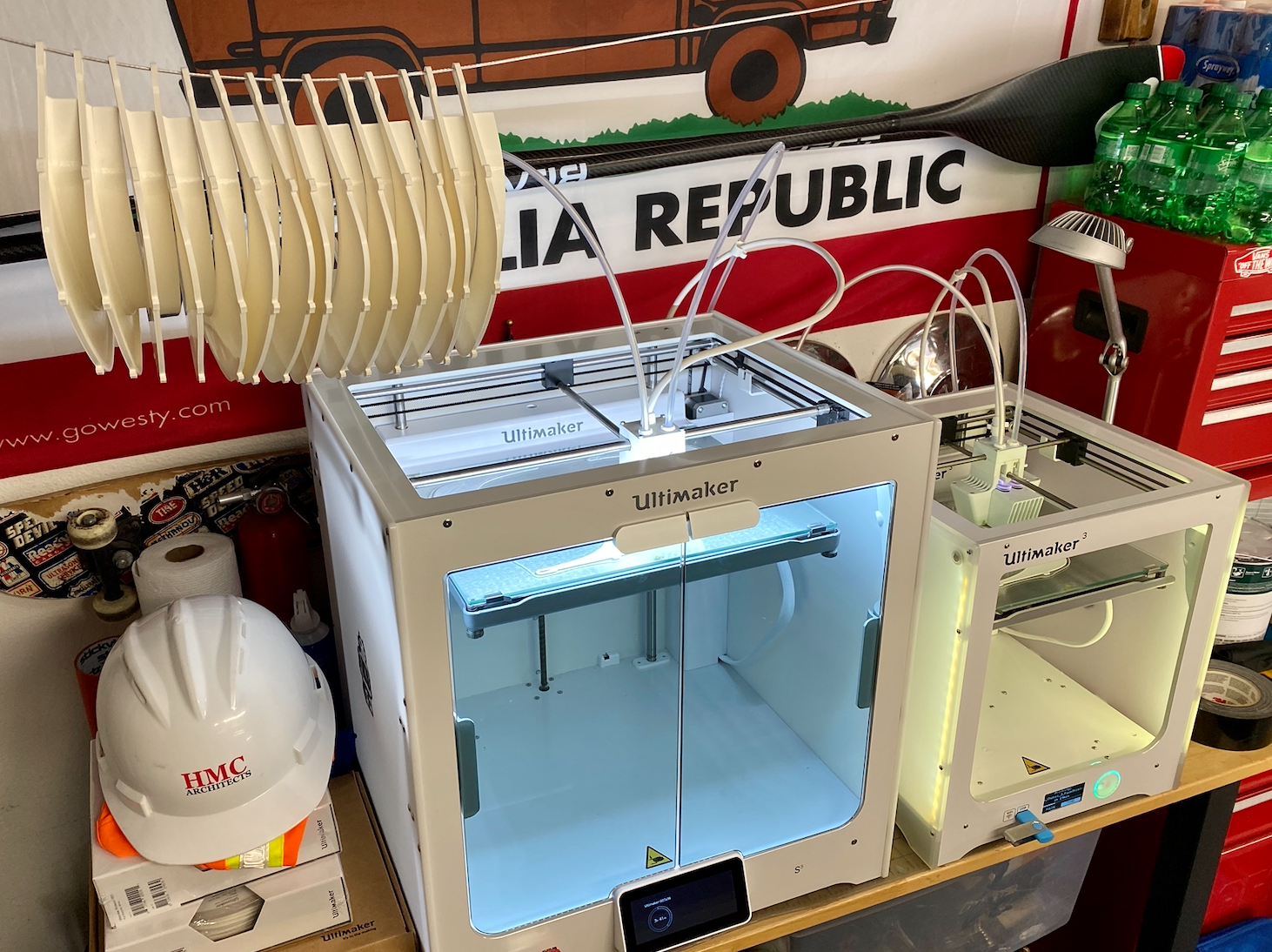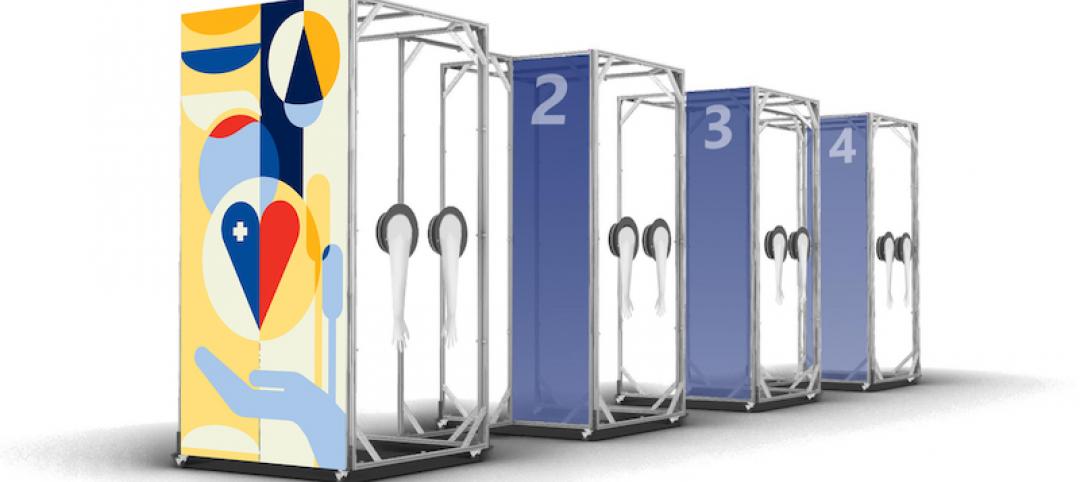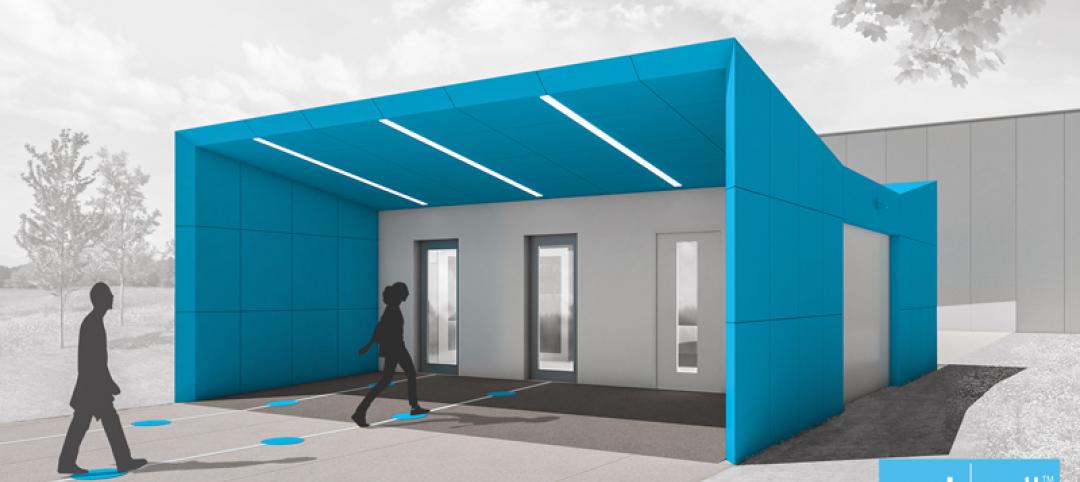HMC Architects is among the latest design brands to manufacture face shields for healthcare workers in response to the ongoing coronavirus crisis.
Using the Columbia University Library Studios information as a guide, the design firm is applying its fabrication capabilities and Ultimaker 3D printers to manufacture PPE face shields and make them available to hospitals and clinics in its communities.
 An Ultimaker 3D printer at a remote fabrication site being operated by self-isolated HMC employees.
An Ultimaker 3D printer at a remote fabrication site being operated by self-isolated HMC employees.
“If there was any time for innovative design firms to step up and provide resources to our communities, it’s right now,” said HMC President and CEO Brian Staton. “We hope to distribute as many as we can to support the efforts of our heroic healthcare workers.”
With its Ultimaker 3 and Ultimaker 5S printers running all day, every day from work-from-home locations in Los Angeles, San Diego, San Jose, Sacramento, and Ontario, Calif., HMC designers are estimating up to 35 face shields per day.
See the brief video demonstration:
3 PARTS NEEDED FOR MAKING FACE SHIELDS
The face shields are made up of three parts:
1. An elastic headband holding the shield in place on the healthcare worker’s head.
2. A 3D-printed headband connecting the elastic to the transparent shield that rests on the healthcare worker’s forehead.
3. A transparent shield made of PETG (a thin, clear, impermeable plastic).
Using 3D models from the Columbia University Library Studios website, the firm has been able to coordinate a lot of data to fabricate the 3D-printed headband that connects the elastic to the shield. The HMC teams have been using Cura open-source software to optimize print times and get higher quantities out of the 3D printers.
HMC is sourcing the face shield material (PETG 30 mil sheet material) from Riverside Plastics, a local Southern California plastic supplier. Other materials, such as elastic straps for the headbands and Ziploc bags for packaging, are being sourced from local hardware and fabric retailers.
 Face shield parts fabricated by remotely sited HMC staff using 3D printers.
Face shield parts fabricated by remotely sited HMC staff using 3D printers.
HMC designers are following strict contamination guidelines during production, constantly sanitizing the shields and packaging them for distribution. The firm is putting together a distribution strategy and are in the process of connecting with healthcare organizations most in need and plans to begin distributing the face shields by next week. HMC has also been in touch with other local architecture firms in the hopes that their work inspires others to join their effort.
The designers have already made improvements to their original prototypes. They changed to closed-cell foam after having some concerns about the sterility of open-cell weather stripping as specified on the Columbia University website. A local contact stepped up to provide the closed-cell foam, which is not always readily available.
DESIGN BRANDS RESPONDING TO PPE SHORTAGE
HMC joins the list of other innovative design brands—notably Under Armour, New Balance, Chanel, and Ralph Lauren—to find creative ways to respond to the personal protective equipment shortage caused by COVID-19.
Related Stories
Coronavirus | Jun 14, 2020
A new report on how campus buildings can reopen safely
Leo A Daly white paper suggests dividing students into smaller “cohorts,” and assigning bathroom spaces.
Coronavirus | Jun 12, 2020
BD+C launches 'The Weekly,' a streaming program for the design and construction industry
The first episode, now available on demand, features experts from Robins & Morton, Gensler, and FMI on the current state of the AEC market.
Coronavirus | Jun 9, 2020
Going viral: How the coronavirus pandemic could change the built environment
Architecture and construction firms—and their clients—are asking new questions about infection control as it pertains to people assembly, building wellness, and technology.
Fire and Life Safety | Jun 9, 2020
NFPA develops business reopening checklist for fire and life safety measures
The new checklist helps building owners and facility managers ensure fire and life safety as businesses prepare to re-open amid the coronavirus pandemic.
Coronavirus | Jun 9, 2020
CannonDesign unveils COVID Shield
As the world evolves its response to the COVID-19 pandemic, one clear reality is testing for the virus will be part of our daily lives for the foreseeable future.
Coronavirus | Jun 5, 2020
3 strategies to improve the wellness of building systems and gain tenant trust
Three operational issues that must be prioritized for every building in order to achieve tenant trust are air quality/ventilation, relative humidity, and building commissioning.
Coronavirus | Jun 2, 2020
5 ways to improve hand washing and minimize germs in public restrooms
Bradley Corp. offers five upgrades to make public restrooms more sanitary.
Coronavirus | Jun 2, 2020
Perkins and Will, Healthy Building Network advise against the use of antimicrobial building products
Even during a pandemic, antimicrobial building products may do more harm than good.
Coronavirus | May 30, 2020
A welcoming entry-point for wellness screening anywhere
Modular WorkWell™ ecosystem can process up to 40 people per minute.
Coronavirus | May 29, 2020
Black & Veatch, DPR, Haskell, McCarthy launch COVID-19 construction safety coalition
The NEXT Coalition will challenge engineering and construction firms to enhance health and safety amid the Coronavirus pandemic.

















